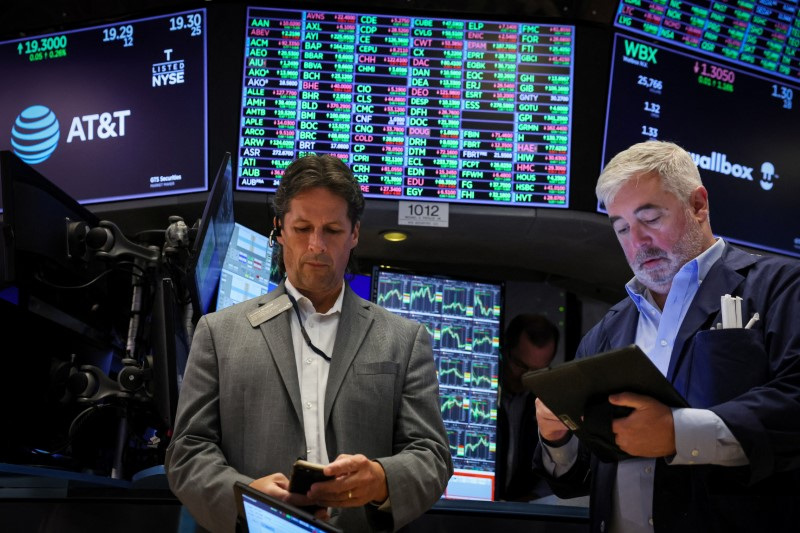NEW YORK (Reuters) -The S&P 500 ended higher on Friday and was little changed for the week after regaining almost all of its losses since Monday’s steep dive that was prompted by fears of a recession and unwinding of a global yen-funded carry trade.
The technology sector gave the index its biggest boost on Friday, and the Cboe Volatility Index, Wall Street’s “fear gauge,” fell after surging at the start of the week.
Monday’s big decline followed a sharp sell-off last week as a weaker-than-expected July jobs report sparked recession fears, and investors unwound currency carry trade positions involving the Japanese yen.
“Investors are trying to find evidence of a bottom,” said Robert Phipps, a director at Per Stirling Capital Management in Austin, Texas.
On Thursday, Federal Reserve policymakers expressed confidence that inflation was cooling enough to allow rate cuts ahead, and said they will take their cues on the size and timing of those cuts from the economic data.
The Dow Jones Industrial Average rose 51.05 points, or 0.13%, to 39,497.54, the S&P 500 gained 24.85 points, or 0.47%, to 5,344.16 and the Nasdaq Composite added 85.28 points, or 0.51%, to 16,745.30.
For the week, the S&P 500 was down 0.05%, the Dow was down 0.6% and the Nasdaq was down 0.2%.
“There is going to continue to be a significant amount of uncertainty and anxiety hanging over the market for the course of the next month until we get to the next Fed meeting,” said Michael James, managing director of equity trading at Wedbush Securities in Los Angeles.
The Fed is expected to cut rates at its next policy meeting on Sept. 17-18, but traders are weighing whether a 25 or 50 basis point reduction is more likely. Traders are currently pricing in a 51% probability of a 50 basis point cut, and 49% odds of a 25 basis point reduction, according to the CME Group’s (NASDAQ:CME) FedWatch Tool.
Investors also await next week’s readings on U.S. consumer prices and retail sales for July, which could provide fresh evidence on the chances of a soft landing for the American economy.
Even after recent selling, all three major indexes remain solidly higher for the year, with big gains early in 2024 driven by strong earnings in tech-related megacaps and optimism over artificial intelligence.
The S&P 500 and Nasdaq are now each up about 12% since Dec. 31, and the selloff has made tech stocks less expensive based on price-to-earnings ratios.
Among individual gainers Friday, videogame publisher Take-Two (NASDAQ:TTWO) Interactive Software climbed 4.4% as it expects net bookings to grow in fiscal years 2026 and 2027.
Expedia (NASDAQ:EXPE) also advanced 10.2% after the online travel agency beat analysts’ expectations for second-quarter profit.
Volume on U.S. exchanges was 11.13 billion shares, compared with the 12.59 billion average for the full session over the last 20 trading days.

Advancing issues outnumbered declining ones on the NYSE by a 1.39-to-1 ratio; on Nasdaq, a 1.14-to-1 ratio favored decliners.
The S&P 500 posted 15 new 52-week highs and 3 new lows; the Nasdaq Composite recorded 52 new highs and 159 new lows.
To read the full article, Click Here

